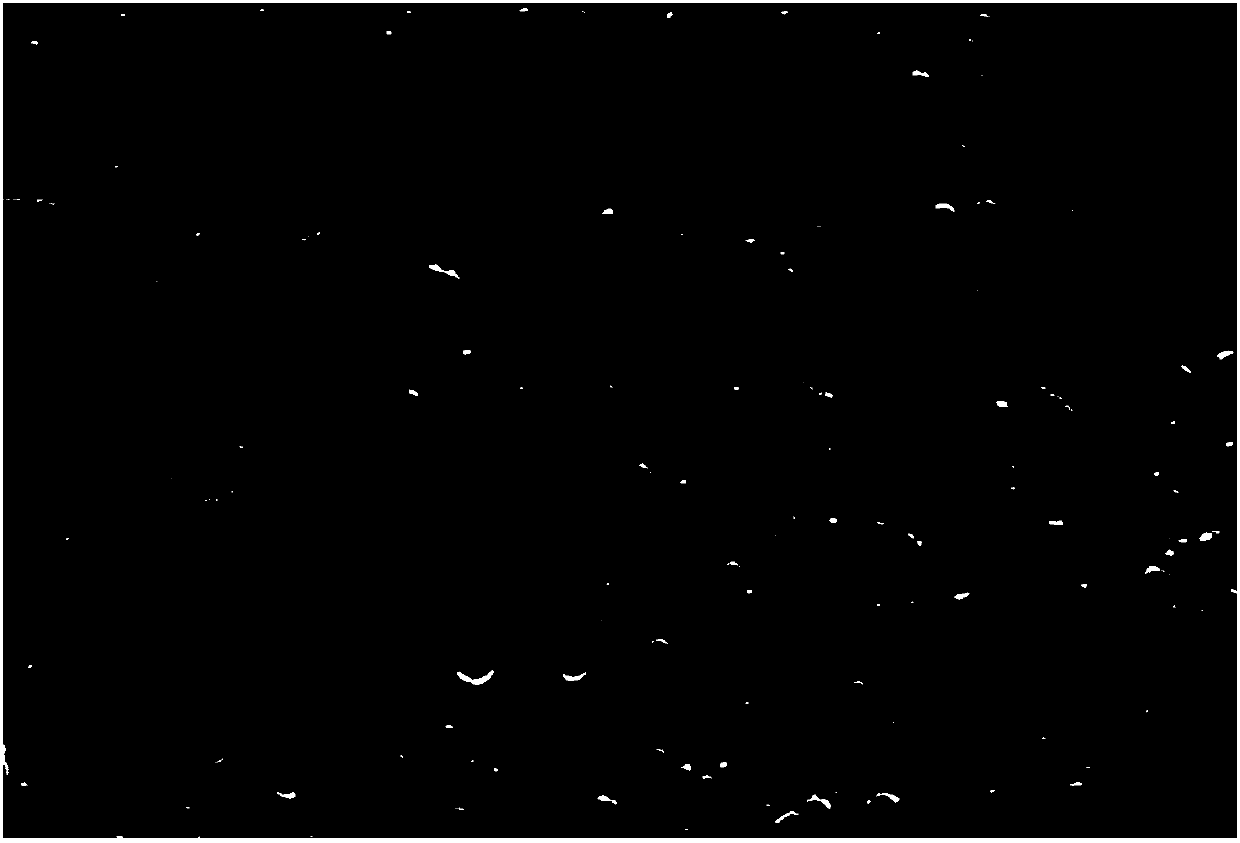Preparation method of polymer blended functionally gradient composite material
A gradient function and composite material technology, which is applied in the preparation field of polymer blend gradient function composite materials, can solve problems such as mutual entanglement, phase separation difficulties, thick gradient membrane materials, etc., to avoid structural deformation and damage, and industrial implementation The effect of strong resistance and environmental protection of the process route
- Summary
- Abstract
- Description
- Claims
- Application Information
AI Technical Summary
Problems solved by technology
Method used
Image
Examples
Embodiment 1
[0028] Embodiment 1: A kind of preparation method of polymer blend gradient functional composite material, comprises the following steps:
[0029] Step 1: Preparation of blend system
[0030] Weigh 10g of epoxy resin (model E51), 4g of polyamide (model 651), 3g of negatively charged polybutylacrylate micro-nanospheres (diameter is 2um) and blend them, stir mechanically for 5 minutes, and then mix them at room temperature. Ultrasonic dispersion was performed for 30 minutes, and the power of the ultrasonic dispersion device was controlled to 700w.
[0031] Step 2: Form gradient structure driven by DC electric field
[0032] Put the mixed liquid into a transparent conductive glass mold with a thickness of 1mm and connect the positive and negative electrodes. The mold is placed on a heating platform with adjustable temperature. After applying a DC voltage of 2000V / mm, the sample is maintained at 40°C for 30 minutes. After the epoxy resin is gelled, the electric field is removed,...
Embodiment 2
[0033] Embodiment 2: a kind of preparation method of polymer blend gradient functional composite material, comprises the following steps:
[0034] Step 1: Preparation of blend system
[0035] Take by weighing 10g acrylic resin (the model is NOA65, produced by Norland Company), 3g positively charged polystyrene micro-nanospheres (diameter is 2um) blending, first mechanically stirred for 5 minutes, then ultrasonically dispersed at normal temperature for 30 minutes, The power control of the ultrasonic dispersing device is 700w.
[0036] Step 2: Form gradient structure driven by DC electric field
[0037] Put the mixed liquid into a transparent conductive glass mold with a thickness of 1mm and connect the positive and negative electrodes. After applying a DC voltage of 600V / mm, the sample is maintained at 40°C for 10 minutes, cured with 360nm ultraviolet light for 3s, and then the electric field is removed. , to obtain the functional gradient material with polystyrene micro-nano...
Embodiment 4
[0043] Embodiment 4: a kind of preparation method of polymer blend gradient functional composite material, comprises the following steps:
[0044] Step 1: Preparation of blend system
[0045] Weigh 10g of epoxy resin (type E51), 3g of polyamide (type 651), 6g of polybutylacrylate micro-nanospheres (2um in diameter), mechanically stir for 5 minutes, then ultrasonically disperse at room temperature for 30 minutes, and ultrasonically disperse The power control of the device is 700w.
[0046] Step 2: Form gradient structure driven by DC electric field
[0047] Put the mixed liquid into a transparent conductive glass mold with a thickness of 1mm and connect the positive and negative electrodes. The mold is placed on a heating platform with adjustable temperature. After applying a DC voltage of 2000V / mm, the sample is maintained at 40°C for 30 minutes. After the epoxy resin is gelled, the electric field is removed, and the temperature is raised to 70°C for 2 hours. After the epoxy...
PUM
| Property | Measurement | Unit |
|---|---|---|
| Diameter | aaaaa | aaaaa |
| Diameter | aaaaa | aaaaa |
| Diameter | aaaaa | aaaaa |
Abstract
Description
Claims
Application Information
 Login to View More
Login to View More - R&D
- Intellectual Property
- Life Sciences
- Materials
- Tech Scout
- Unparalleled Data Quality
- Higher Quality Content
- 60% Fewer Hallucinations
Browse by: Latest US Patents, China's latest patents, Technical Efficacy Thesaurus, Application Domain, Technology Topic, Popular Technical Reports.
© 2025 PatSnap. All rights reserved.Legal|Privacy policy|Modern Slavery Act Transparency Statement|Sitemap|About US| Contact US: help@patsnap.com



